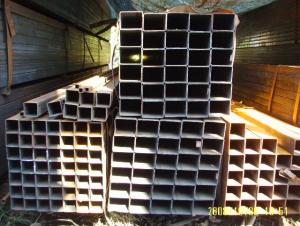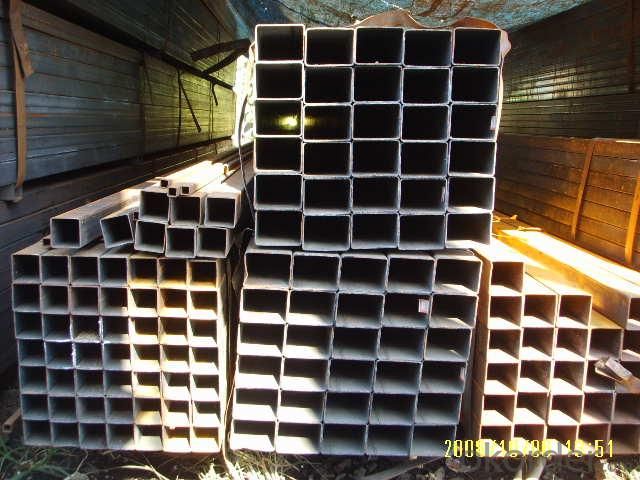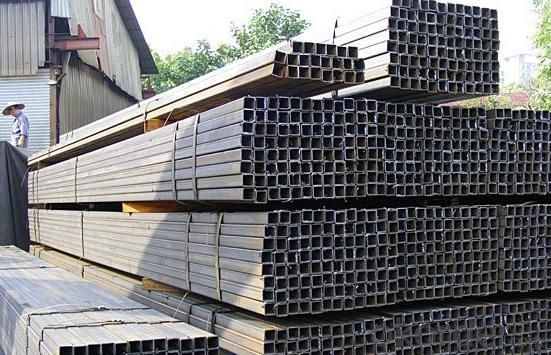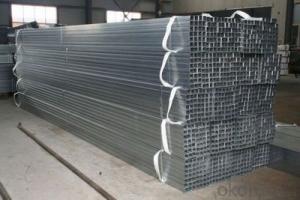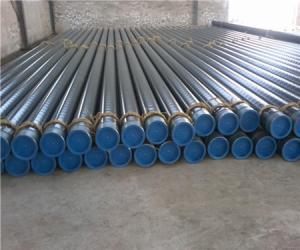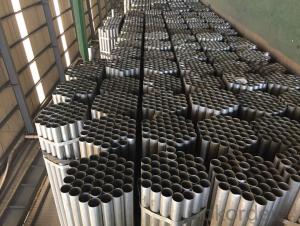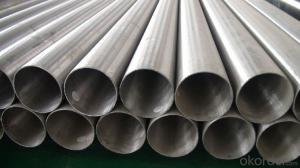Welded Black Carbon Square Tubes Pre-galvanized/ Galvanized ASTM A500 10*10-400*400 Structure Pipe
- Loading Port:
- Tianjin Port
- Payment Terms:
- TT or L/C
- Min Order Qty:
- 50MT m.t.
- Supply Capability:
- based on order m.t./month
OKorder Service Pledge
OKorder Financial Service
You Might Also Like
1. Specification of Hollow Section-Square Tubes
1) Application: Widely used in building, machine, chemical equipment, automobile industrial, container, and also applied to agriculture and mine machine.
2)Standard:ASTM A500, GB6728
3)Steel grade: ASTM A500: A, B, C; GB6728:Q195,Q215,Q235,Q345
4)Delivery Time: 7-20 Days after receving prepayment or L/C
2. Size of Hollow Section-Square Tubes
|
SIZE(mm) |
THICKNESS(mm) |
|
10×10 |
0.6-1.0 |
|
12×12 |
0.6-1.0 |
|
16×16 |
0.6-1.2 |
|
19×19 |
0.6-1.5 |
|
20×20 |
1.6-1.5 |
|
25×25 |
1.0-2.75 |
|
30×30 |
1.0-2.75 |
|
32×32 |
1.0-3.0 |
|
38×38 |
1.0-3.0 |
|
40×40 |
1.0-3.5 |
|
50×50 |
1.0-5.0 |
|
60×60 |
1.0-6.0 |
|
63.5×63.5 |
1.0-6.0 |
|
70×70 |
1.5-6.0 |
|
75×75 |
1.5-6.0 |
|
80×80 |
2.0-6.0 |
|
90×90 |
2.0-6.0 |
|
100×100 |
2.3-6.0 |
|
120×120 |
4.0-6.0 |
|
125×125 |
4.0-6.0 |
|
150×150 |
4.0-8.0 |
|
200×200 |
6.0-12 |
|
250×250 |
6.0-12 |
|
300×300 |
6.0-12 |
|
400×400 |
6.0-12 |
*Remark: Besides below sizes, we also can arrange production based on requirement of customer's requirement
3. Packing&Delivery
Packing Details: Big OD: in bulk; Small OD: packed by steel pipe;Plastic bags 4 or According to customer's requirement
Delivery Time: 20-30 days upon receving prepayment or L/C
4. Data Sheet
ASTM A 500
|
Chemical Requirement | |||||
|
Composition % | |||||
|
Grade A |
Grade B | ||||
|
Element |
Heat analysis |
Product analysis |
Heat analysis |
Product analysis | |
|
Carbon max |
0.26 |
0.3 |
0.22 |
0.26 | |
|
Manganese max |
… |
… |
1.4 |
1.45 | |
|
Phosphorus, max |
0.035 |
0.045 |
0.03 |
0.04 | |
|
Sulfur max |
0.035 |
0.045 |
0.02 |
0.03 | |
|
Copper, when copper steel is specified, min |
0.20 |
0.18 |
0.2 |
0.18 | |
|
Where an ellipsis (...)appears in this table, there is no requirement | |||||
|
For each reduction of 0.01 percentage point below the specified maximum for carton, and increase of 0.06 percentage point above the specified maximum for manganese is permitted, up to a maximum of 1.50% by heat analysis and 1.6% by product analysis | |||||
|
Tensile Requirement | ||
|
|
Grade A |
Grade B |
|
Tensile strength, min, psi (Mpa) |
48000 (400) |
70000 (483) |
|
Yield strength, min, psi (Mpa) |
36000 (250) |
50000 (345) |
|
Elongation in 2 in. (50.8mm), min, % |
23 |
23 |
5. Products Showroom
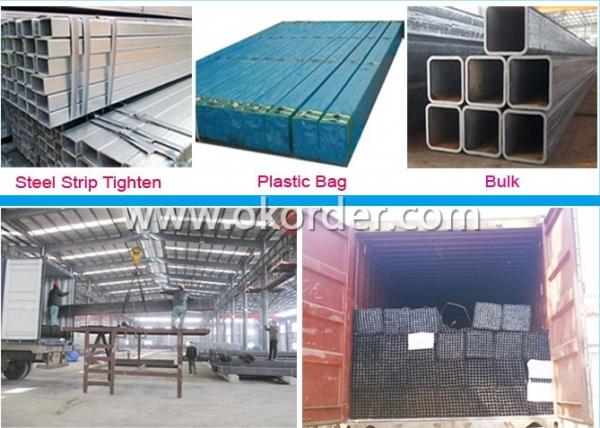
- Q: How are steel pipes used in the manufacturing of conveyor systems?
- Steel pipes are commonly used in the manufacturing of conveyor systems to provide a durable and reliable structure for transporting various materials. They are typically used as the main framework for the conveyor system, supporting the conveyor belt and other components. Steel pipes are known for their strength and resistance to wear and tear, making them ideal for handling heavy loads and withstanding continuous use. Additionally, steel pipes can be easily shaped and welded, allowing for customization and flexibility in conveyor system design.
- Q: How to descaling galvanized steel pipe?
- Galvanized steel tubes will not rust in principle.... Batch rust with weak acid water immersion, individual can use steel wire brush brush on it.
- Q: What is the impact of steel pipe size on flow rate and pressure?
- Both the flow rate and pressure are significantly impacted by the size or diameter of a steel pipe. To begin with, the flow rate represents the amount of fluid that can pass through the pipe within a given time frame. A larger diameter allows for a greater flow rate as it provides more space for the fluid to move through. This is because a larger cross-sectional area creates less resistance for the fluid. Consequently, increasing the size of the steel pipe generally leads to an increase in flow rate. Additionally, the size of a pipe affects the pressure within it. As the fluid flows through the pipe, it encounters friction against the pipe walls, resulting in resistance. This resistance causes a drop in pressure along the length of the pipe. A smaller diameter pipe experiences higher frictional losses, leading to a greater pressure drop. Conversely, a larger diameter pipe reduces frictional losses, resulting in a lower pressure drop. Therefore, increasing the size of the steel pipe typically leads to a decrease in pressure drop. It is important to note that although increasing the size of a steel pipe generally leads to a higher flow rate and lower pressure drop, other factors can also influence these parameters. These factors include the properties of the fluid, the length and layout of the pipe, and the presence of valves or fittings. Therefore, it is crucial to consider all these factors and perform accurate calculations or simulations to determine the specific impact of steel pipe size on flow rate and pressure within a given system.
- Q: Can steel pipes be used for both high-pressure and low-pressure systems?
- Yes, steel pipes can be used for both high-pressure and low-pressure systems. Steel is known for its durability, strength, and resistance to extreme conditions, making it suitable for various applications. Whether it is transporting liquids or gases in high-pressure systems or low-pressure systems, steel pipes can efficiently handle the demands of both.
- Q: What are the different types of fittings used with steel pipes?
- There are several types of fittings used with steel pipes, including elbow fittings, tee fittings, coupling fittings, union fittings, and flange fittings.
- Q: Can steel pipes be used for underground transportation tunnels?
- Yes, steel pipes can be used for underground transportation tunnels. Steel pipes are commonly used in the construction of underground tunnels for various purposes such as transporting water, gas, and sewage. They are known for their durability, strength, and resistance to corrosion, making them suitable for underground applications. Steel pipes can withstand the weight and pressure exerted by the surrounding soil and can be reinforced to ensure stability. Additionally, steel pipes can be manufactured in various sizes and lengths, allowing for flexibility in tunnel design. However, it is essential to consider factors such as soil conditions, load-bearing capacity, and potential environmental impacts when deciding to use steel pipes for underground transportation tunnels.
- Q: Are steel pipes suitable for offshore drilling platforms?
- Steel pipes have been widely used in offshore drilling platforms because of their strength, durability, and resistance to corrosion. These platforms operate in harsh marine environments, where they are exposed to saltwater, extreme pressure, and temperature changes. Steel pipes are capable of enduring these conditions and serving as a reliable and long-lasting solution for transporting fluids, such as oil and gas, from the seabed to the surface. Moreover, the ability to weld steel pipes together facilitates their easy installation and maintenance on offshore drilling platforms. In conclusion, steel pipes have proven to be an appropriate choice for offshore drilling platforms due to their robustness and ability to withstand the challenging conditions of the marine environment.
- Q: Why seamless steel pipe called seamless steel pipe?
- Seamless steel pipe is a hollow section, without the joint round, square, rectangular steel. Seamless steel tubes are made of ingots or billets made by piercing and are then made by hot rolling, cold rolling or cold casting. Seamless steel pipe with a hollow section, as pipe conveying fluid, compared withsteel and roundsteelinsolid, flexural torsional strength in the same time, the weight is light, is a kind of economic section steel, widely used in the manufacture of structural parts and mechanical parts, such as the oil pipe, automobile transmission shaft, bike frame and construction using steel scaffolding.
- Q: How are steel pipes tested for pressure and leakage?
- Steel pipes are tested for pressure and leakage through various methods including hydrostatic testing, pneumatic testing, and ultrasonic testing. Hydrostatic testing involves filling the pipe with water and applying pressure to check for any leaks or weaknesses. Pneumatic testing involves using compressed air instead of water. Ultrasonic testing uses high-frequency sound waves to detect any flaws or defects in the pipe material. These testing methods ensure that steel pipes meet the required standards for pressure and leakage resistance.
- Q: Can steel pipes be used for underground gas storage?
- Yes, steel pipes can be used for underground gas storage. Steel pipes are commonly used for transporting and storing various types of gases, including natural gas, due to their strength, durability, and resistance to corrosion. They are able to withstand high pressures and can be designed to meet the specific requirements of underground gas storage facilities. Additionally, steel pipes can be coated or lined with materials to further enhance their resistance to corrosion and to prevent any potential leaks. However, it is important to ensure that proper safety measures and regulations are followed during the construction and operation of underground gas storage facilities to prevent any potential risks or hazards.
1. Manufacturer Overview
| Location | Hebei, China |
| Year Established | 1988 |
| Annual Output Value | Above One Hundred Million RMB |
| Main Markets | Main land; Southeast Asia; Middle East; Africa |
| Company Certifications | ISO 9002:2010;API 5L |
2. Manufacturer Certificates
| a) Certification Name | |
| Range | |
| Reference | |
| Validity Period |
3. Manufacturer Capability
| a) Trade Capacity | |
| Nearest Port | Tianjin |
| Export Percentage | 30%-50% |
| No.of Employees in Trade Department | 201-500 People |
| Language Spoken: | English; Chinese |
| b) Factory Information | |
| Factory Size: | 50,000 square meters |
| No. of Production Lines | Above 15 |
| Contract Manufacturing | Meicai Metal Trading Co.Ltd |
| Product Price Range | Average |
Send your message to us
Welded Black Carbon Square Tubes Pre-galvanized/ Galvanized ASTM A500 10*10-400*400 Structure Pipe
- Loading Port:
- Tianjin Port
- Payment Terms:
- TT or L/C
- Min Order Qty:
- 50MT m.t.
- Supply Capability:
- based on order m.t./month
OKorder Service Pledge
OKorder Financial Service
Similar products
Hot products
Hot Searches
Related keywords
